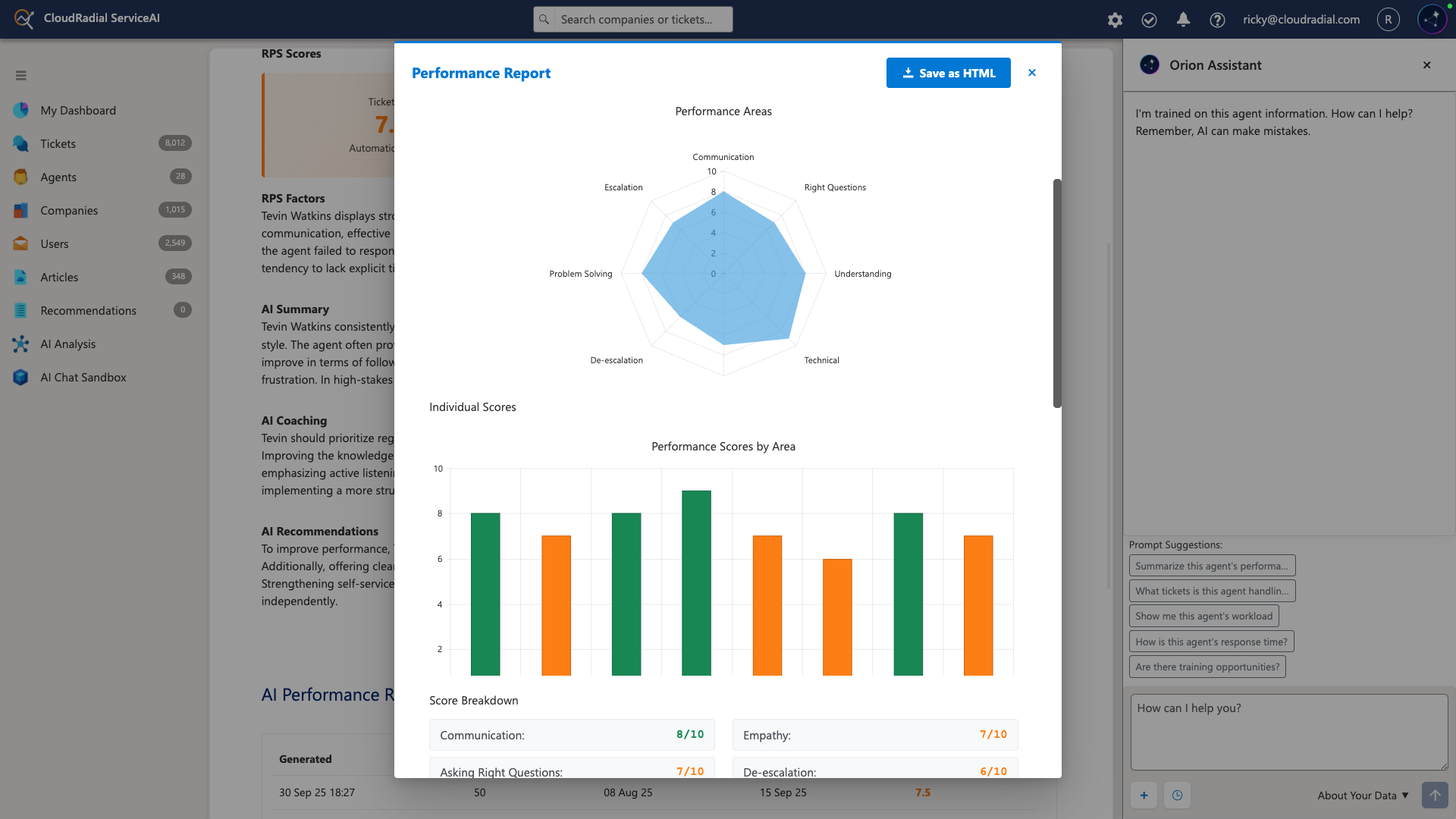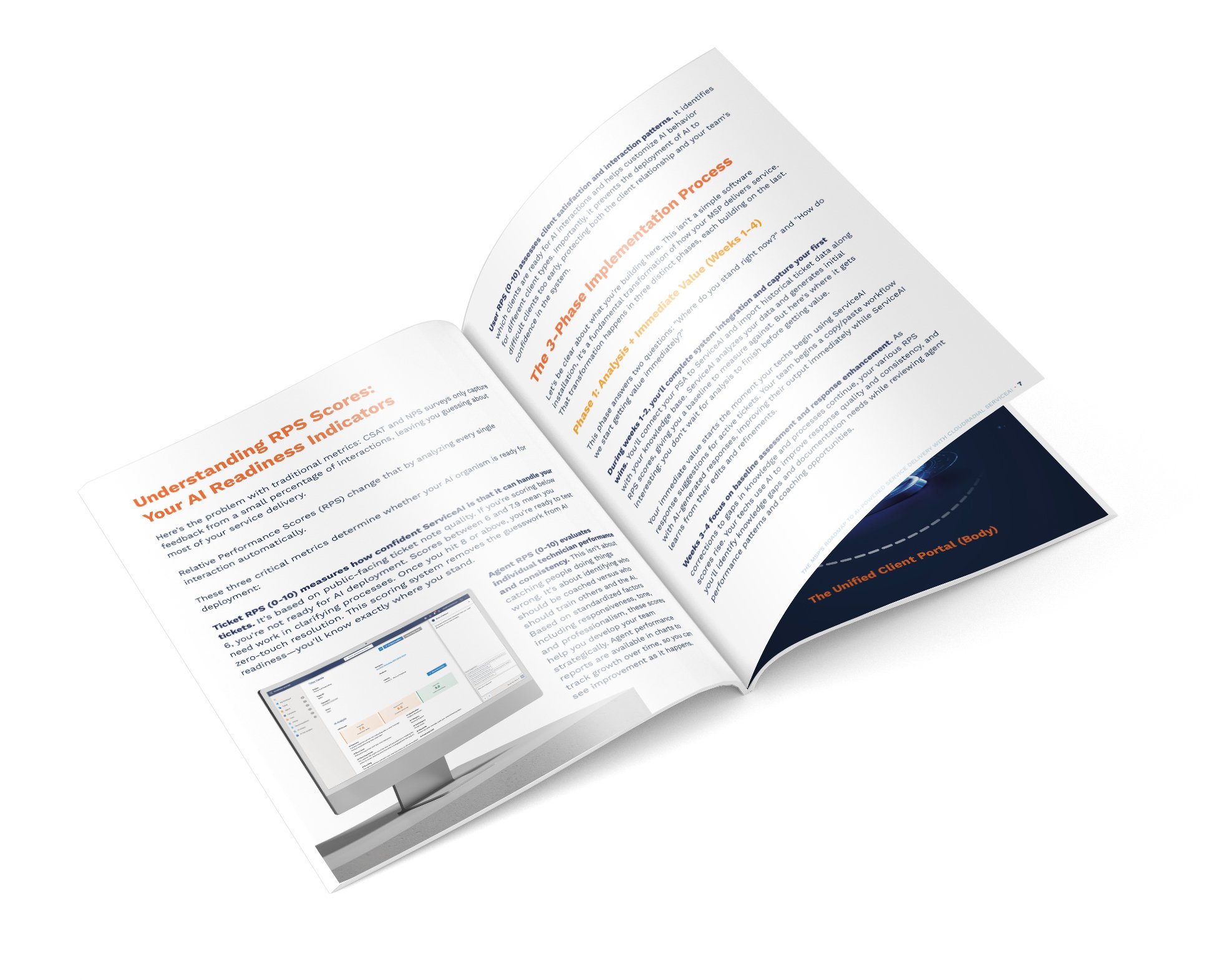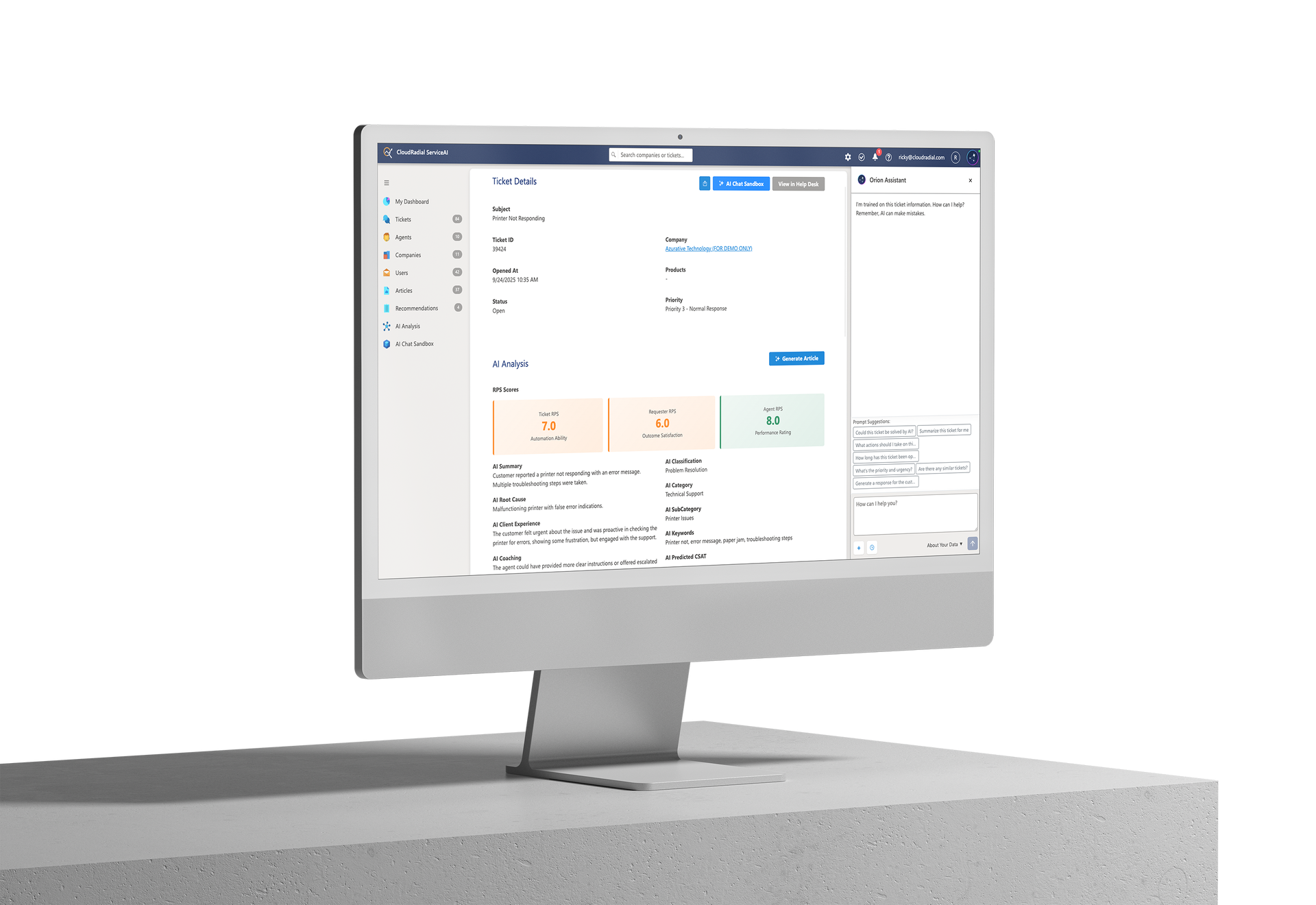Stop Measuring Productivity: Why AI Transformation Requires Different Metrics
Your service desk manager pulls up the dashboard and smiles. Response times are down 35%. Tickets per technician are up 22%. Documentation time has...
Get everything you need for the ultimate client experience
Enterprise-grade infrastructure with the flexibility MSPs demand
Perfectly tailored AI that knows your specific MSP

Build your own Shopify-like store with your PSA products & distributors
Have clients to submit tickets directly to your PSA, freeing up your team's time
Pre-triage and route tickets correctly with the help of AI
Deliver instant, accurate answers that can help achieve zero-touch resolution
You'll learn things like how to add revenue without adding cost, MSP best practices, and how to master client management.

Putting together your solution stack for your MSP business can be challenging.
Not only do you have lots of vendor choices to make in every major service area (like backup vendors, security suites, SOC, NOCs, and more), but you must also decide where to draw the line with where your service stack starts and ends.
Some MSPs choose to stick to verticalized markets with only certain stack elements, while others go for the wide-net approach and purchase tools to meet the needs of clients and prospects.
The former is a bit easier to account for, but the latter means having to always be on the hunt (or at least aware) of viable vendors in every IT-related space.
As if all that isn’t enough, there’s another huge issue: Cost.
The cost of putting together a comprehensive stack can be staggering.
As an experiment, try doing some mental math at how much you’re spending on the following solution stack tools:
Even in a high-level calculation of these tools, you’re bound to put up some hefty numbers.
The issue isn’t in the stack costs per-se but the sheer number of pieces of software needed to operate the business. Looking back, there’s a clear pattern of stack costs steadily rising for MSPs, year over year.
That’s because the bar for service delivery has been set high, even at a basic level.
MSPs often find themselves in an arms race to equip themselves with a competitive stack that both works and integrates well with their current tools and work methodology.
As more products hit the market over time and as client needs evolve, the stack costs seemingly keep climbing higher and higher.
MSPs are forced to try and keep up in this expensive race. But there’s a potential cost-cutting answer here – consolidation.
It’s time to take a good, hard look at the monthly bills for your stack tools.
Nearly all MSPs will be able to look at their stack of tools and determine which can objectively be dismissed or otherwise consolidated. Consolidation of tools can save money and improve the thing that matters the most – the client experience.
You can’t forget that the whole purpose of having a stack in the first place is to deliver value and excellence to your clients.
Many of the tools within the stack (like your PSA and RMM) are intended for your own management and operation, so they’ll be difficult to rule out or consolidate.
But there’s still plenty of room to cut costs for other tools in your stack – take CloudRadial as an example.
CloudRadial is designed to consolidate many of the client-facing tools into one platform that both cuts costs and makes the client experience much better.
Take a handful of different tools that are client-facing, such as:
If you can put those into a singular platform, you can remove the costs for a significant chunk of your stack and make it easier for clients to engage and interact with you.
Looking for tools that offer a clearly defined strategy and a dynamic platform with multiple features can ultimately do wonders for consolidating stack costs and improving the overall operation of the business.
Give CloudRadial a try today to see how it can consolidate your stack costs and improve your client experience.

Your service desk manager pulls up the dashboard and smiles. Response times are down 35%. Tickets per technician are up 22%. Documentation time has...

Most AI implementations fail because they're treated like software installations instead of business transformations.

Picture this: you send out CSAT surveys after tickets close, and maybe you track NPS quarterly. You get back responses from 15-20% of your clients....